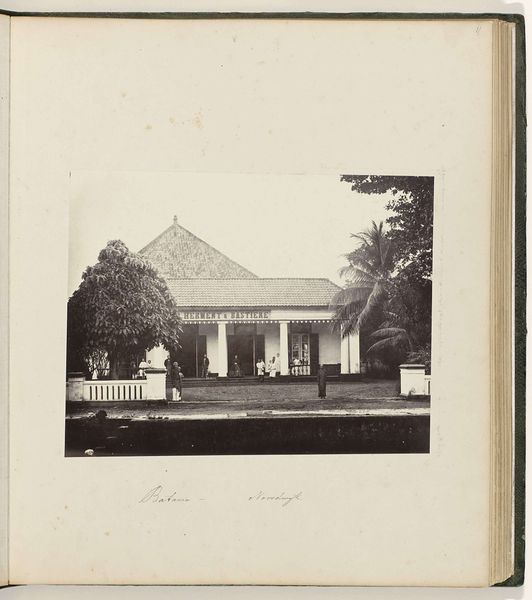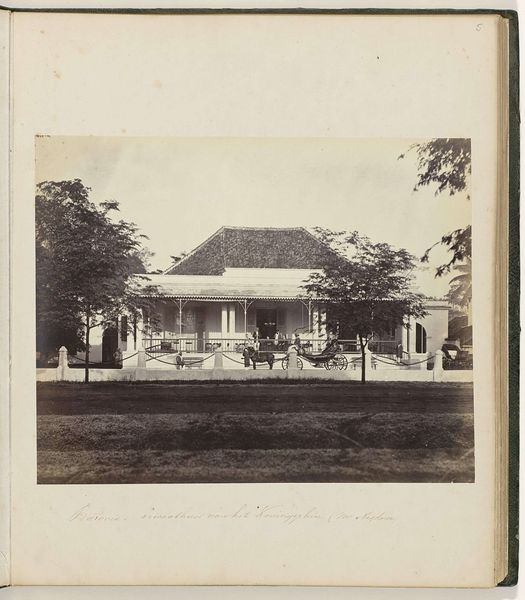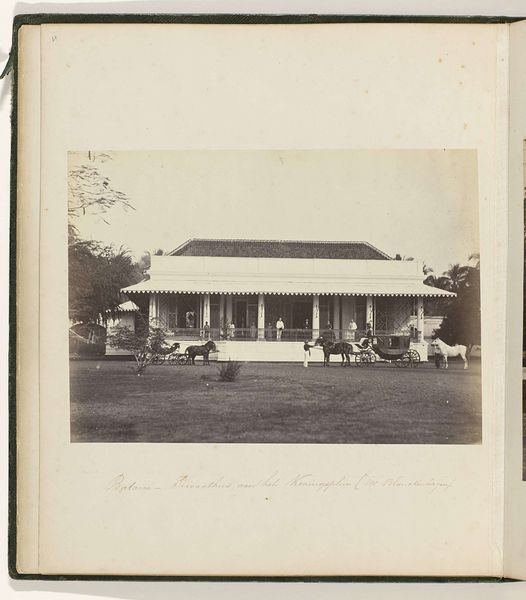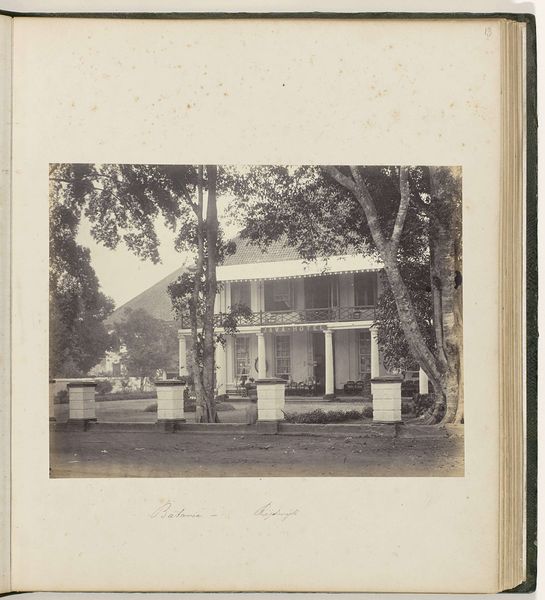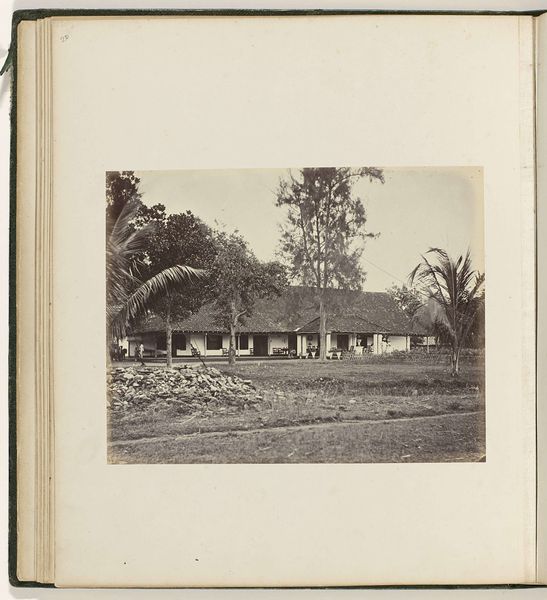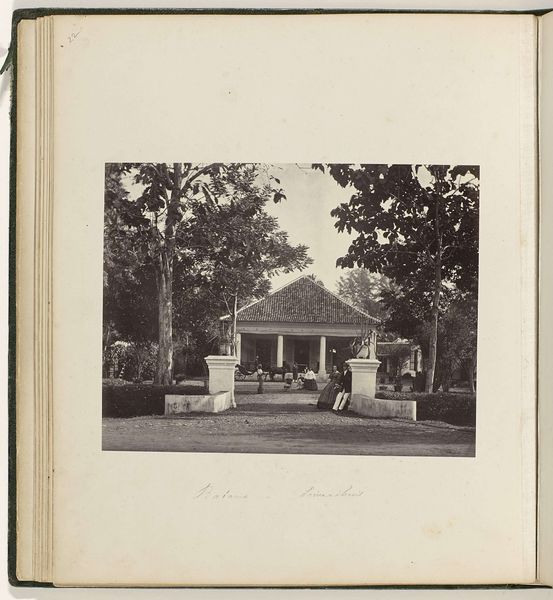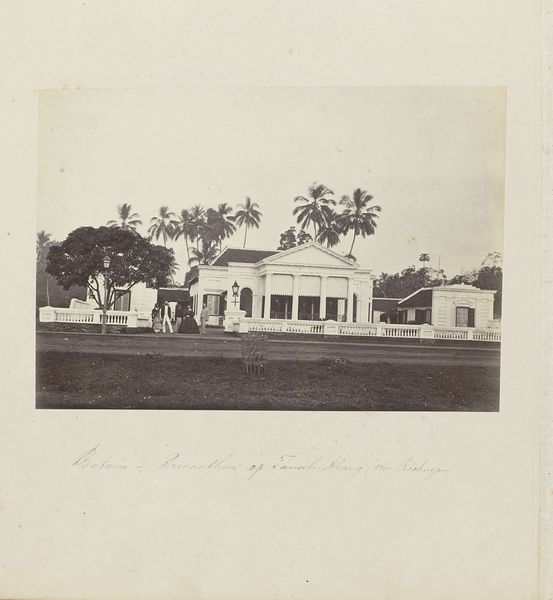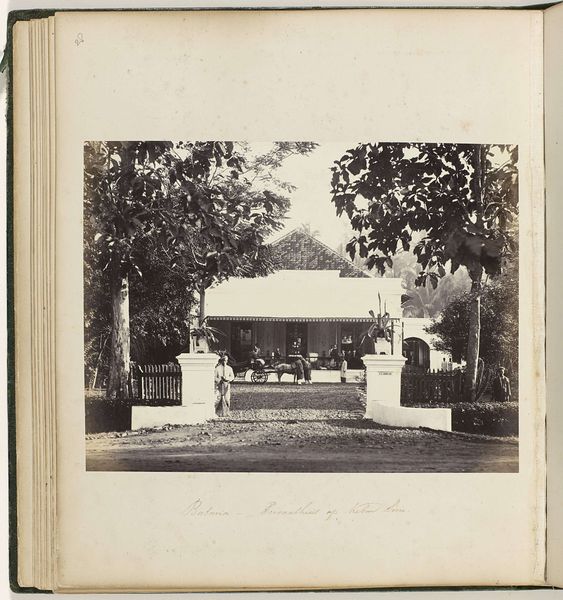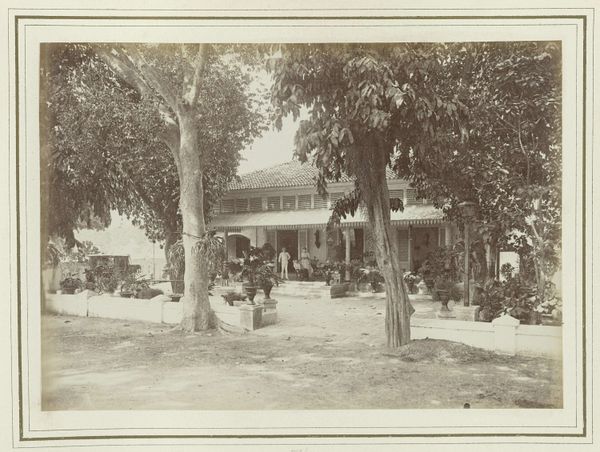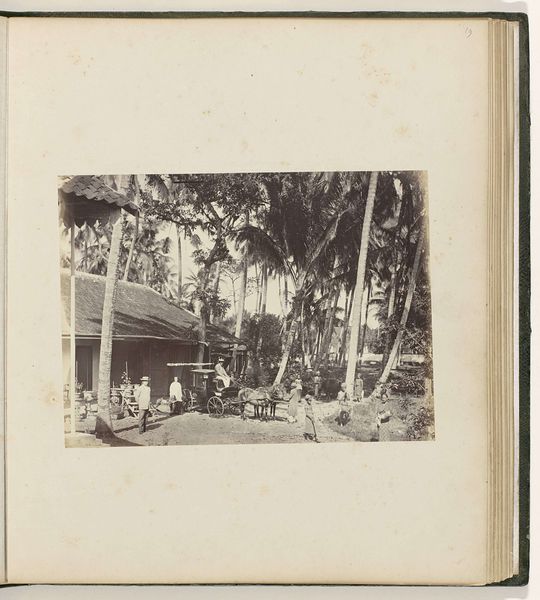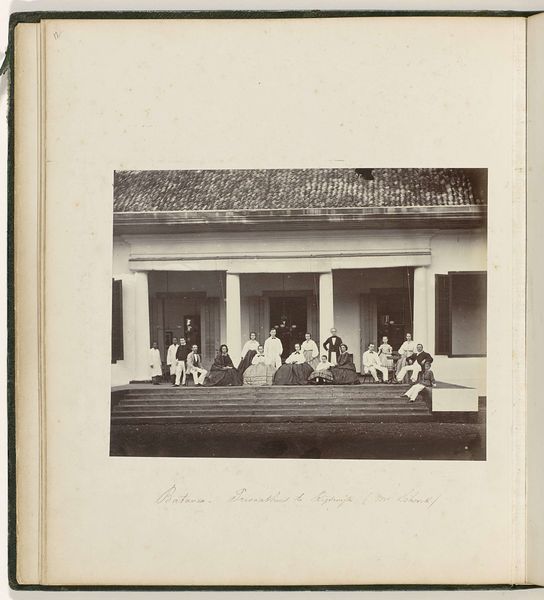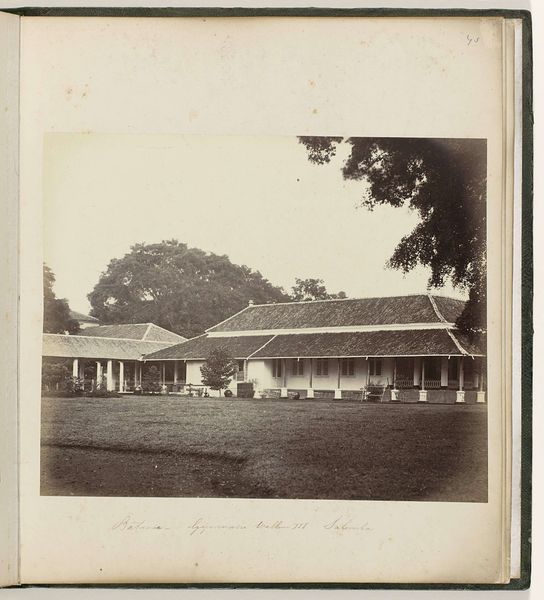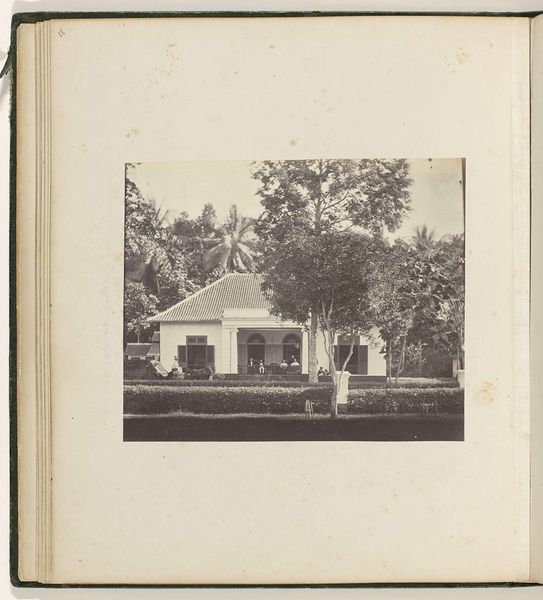
photography, albumen-print
#
portrait
#
asian-art
#
landscape
#
photography
#
albumen-print
Dimensions: height 207 mm, width 267 mm
Copyright: Rijks Museum: Open Domain
Editor: So, this albumen print from between 1863 and 1866, titled "Batavia - Christelijke Ambachtsschool" by Woodbury & Page... It’s a photograph of a school, seemingly with all its students and teachers posed outside. There's a striking stillness to the scene; it almost feels staged, and the light makes it hard to really 'see' them as people, they all blend together in the grey tones. What’s your take on this, what do you see when you look at it? Curator: It’s crucial to contextualize this image within the history of Dutch colonialism. The “Christelijke Ambachtsschool,” or Christian vocational school, immediately signifies an imposition of Western values and systems onto Indonesian society. The very act of photographing the students, posed stiffly in front of the building, speaks volumes about power dynamics. Editor: Power dynamics? Could you elaborate? Curator: Think about who commissioned this photograph, and why. It’s likely intended to showcase the “civilizing mission” of the Dutch, demonstrating their efforts to “educate” and “uplift” the local population. However, the reality was far more complex. This image becomes a document of cultural assimilation, with the school serving as an institution for reshaping Indonesian identity in the colonizer's image. We have to consider the ethical implications of such a project and how the camera itself was a tool in furthering colonial agendas. Do you think the inclusion of native people is voluntary, or are they objects? Editor: That’s a really good question. Looking at their posture, I can understand that this is posed, they seem somewhat self-conscious… I guess, even with the limitations of the photographic medium, it’s naive to consider this an objective point-of-view of a place. It really does point out questions of identity and representation. Curator: Precisely. Examining such images critically allows us to confront uncomfortable truths about our past, while empowering us to dismantle neocolonial structures that persist today.
Comments
No comments
Be the first to comment and join the conversation on the ultimate creative platform.
